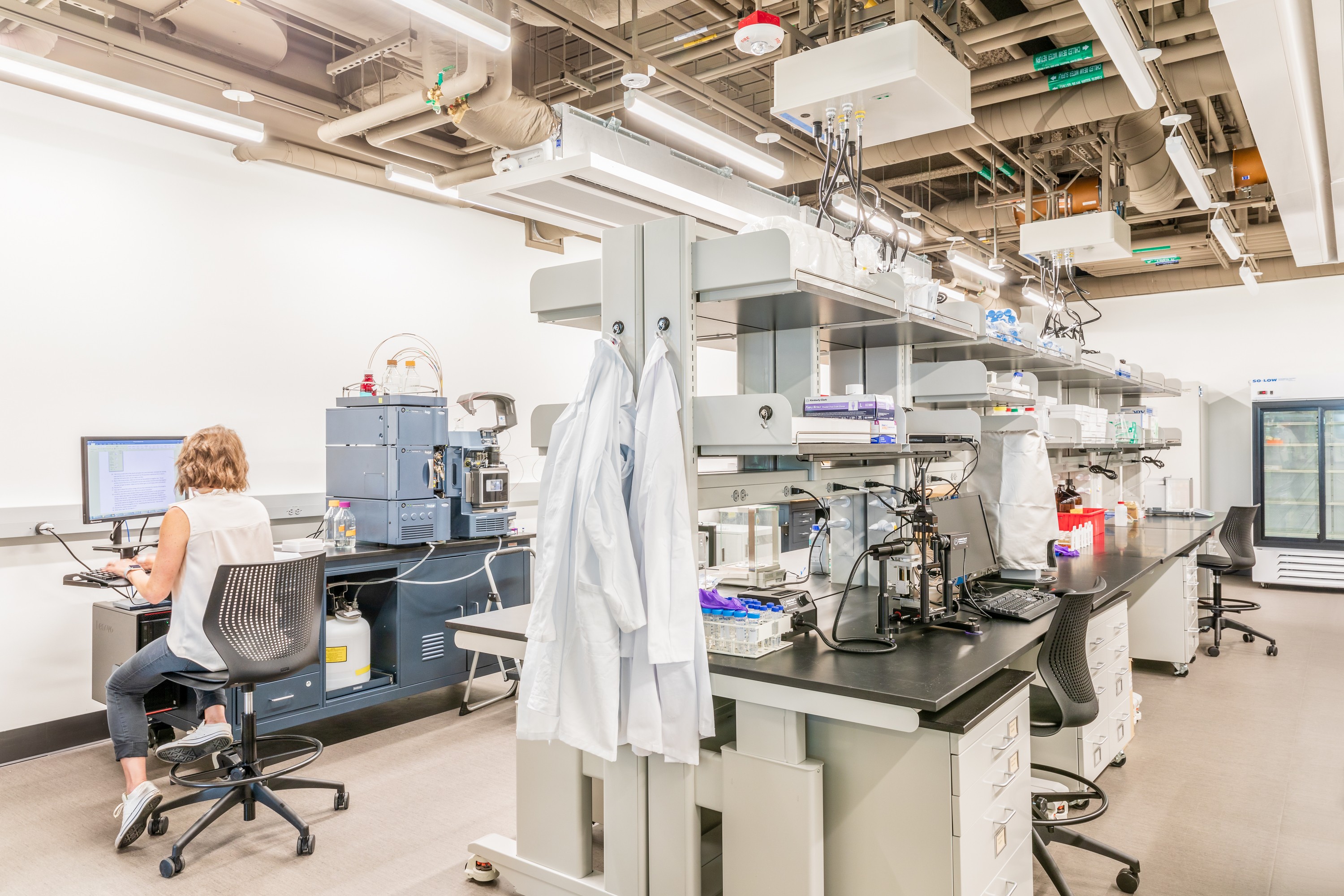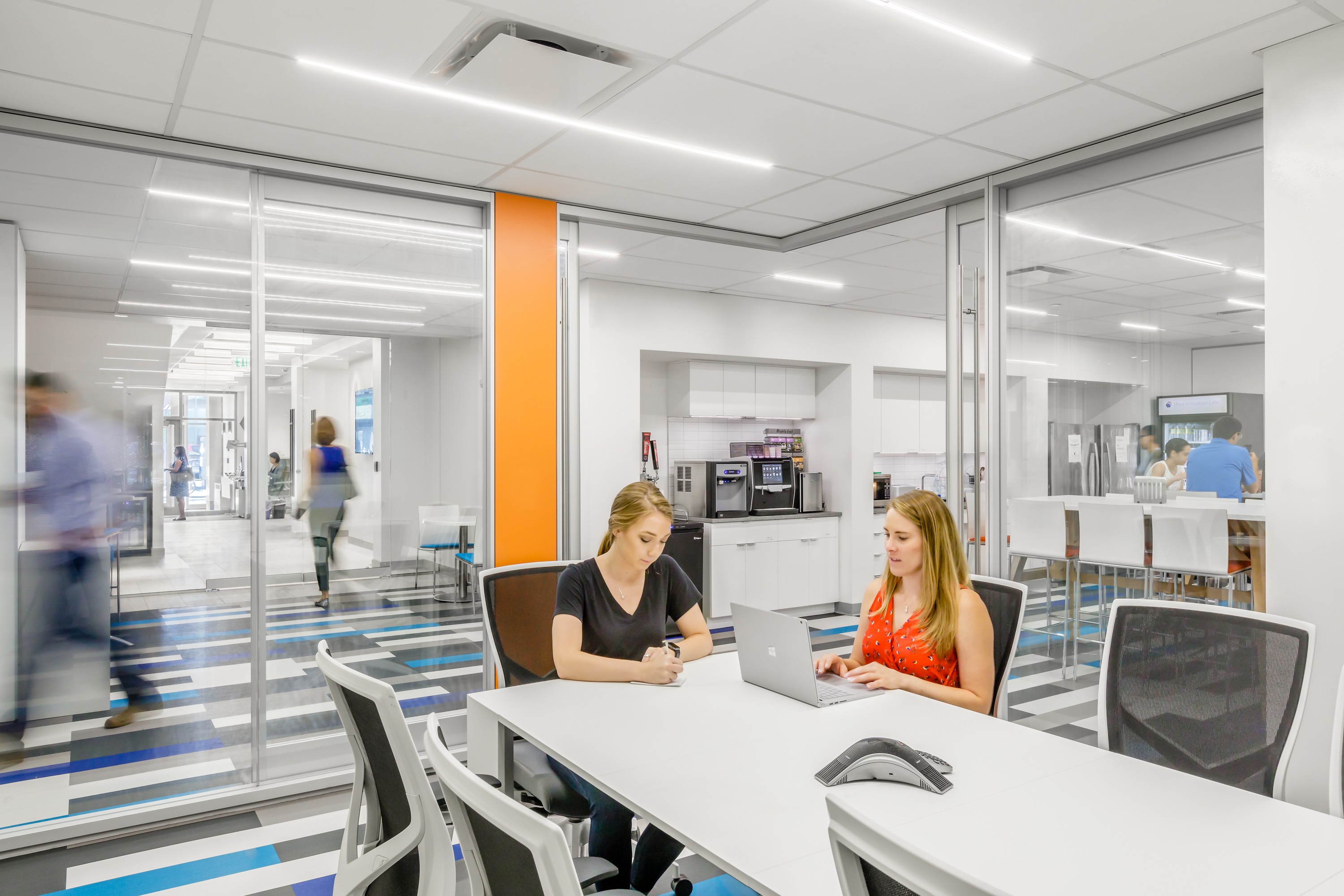Like the open office, the open lab environment is intended to foster innovation and cross-discipline collaboration. However, the downside of these open spaces is the difficulty of subdividing it for specialty purposes and changes in user groups. Another issue is the groundswell of resistance to the idea: most commercial tenants want some level of privacy for their staff, their ideas, and their development.
Accelerating Science Through Flexibility
A version of this article first appeared in Laboratory Equipment, formerly known as Lab Design, in March 2019.
The central mission of a lab designer is to solve problems in ways that allow our clients to focus on and succeed in their research. As the business of science rapidly evolves, much of our work is focused on designing easily reconfigured laboratories that alleviate the most vexing problems of lab operation. What have we learned?
For one thing, the ideal lab of the future will require more than an open environment with moveable casework. To be cost effective and future-ready, lab design needs to equally consider both the Principal Investigator of the moment and the next users of the space.
Additionally, long-term strategies require a new level of attention to lab resilience, technology readiness, and energy use. The lab of the future is going to be more compact, more efficient, and designed for the institution. No longer are we designing solely for the scientist.



